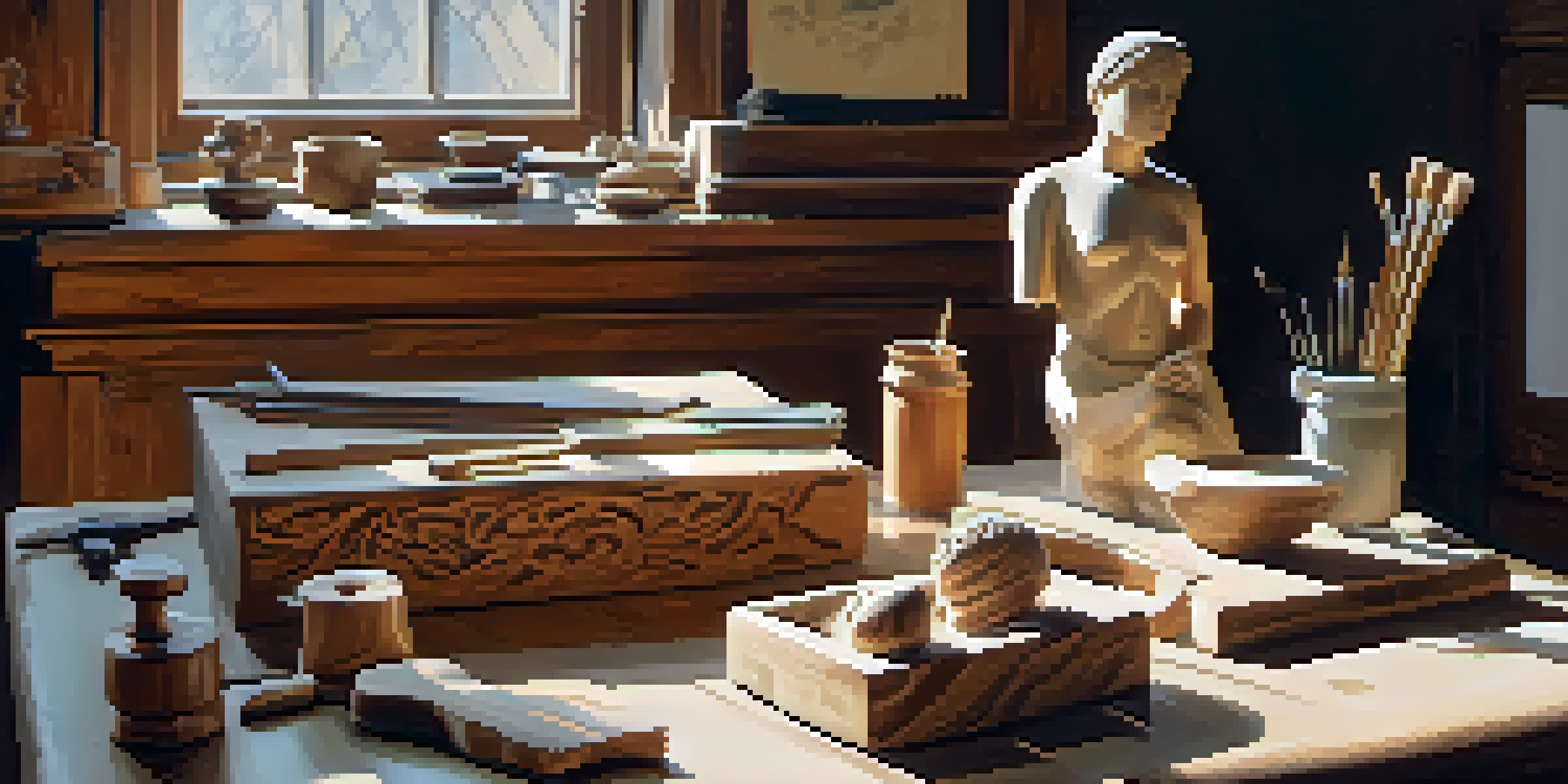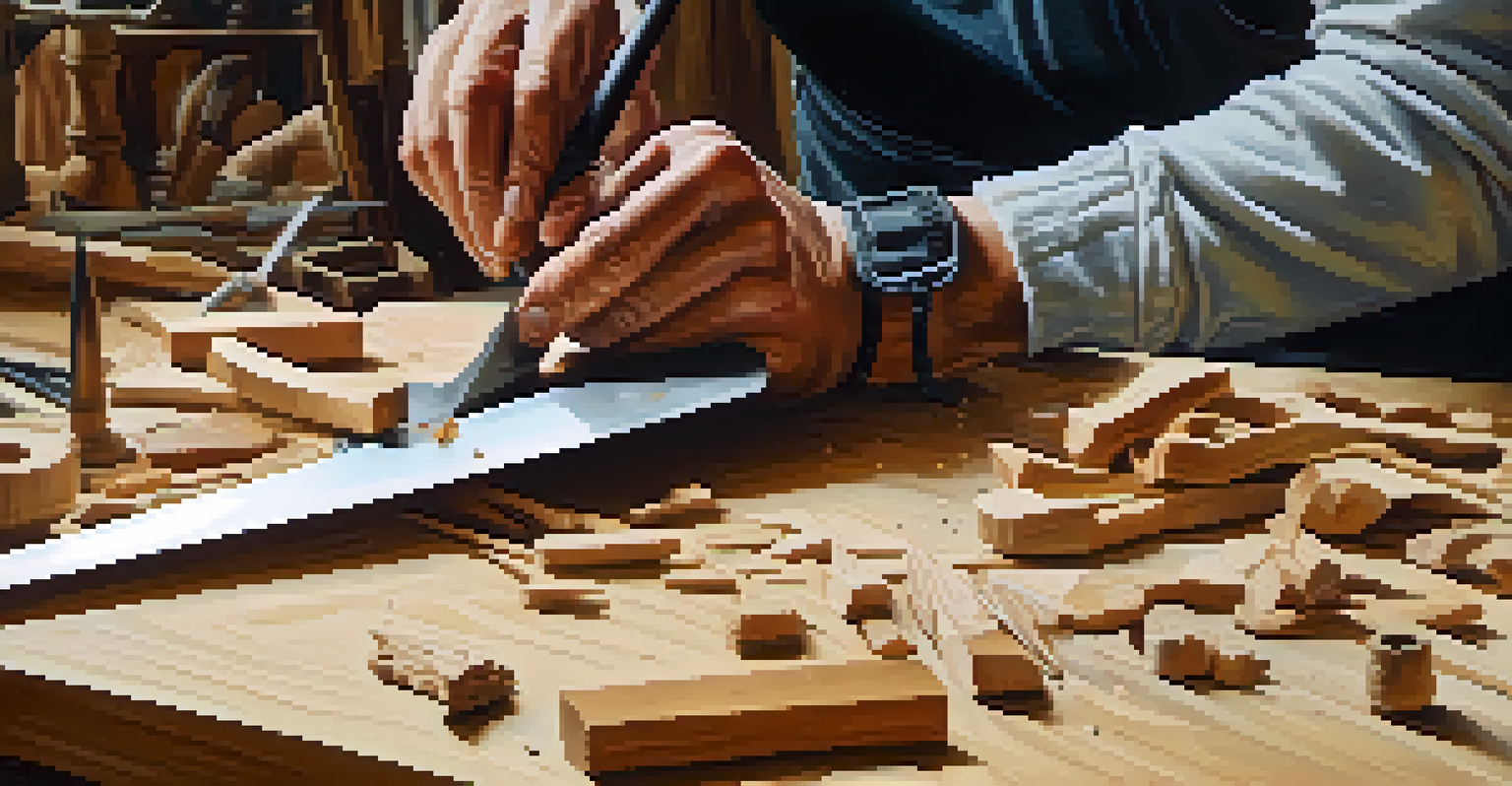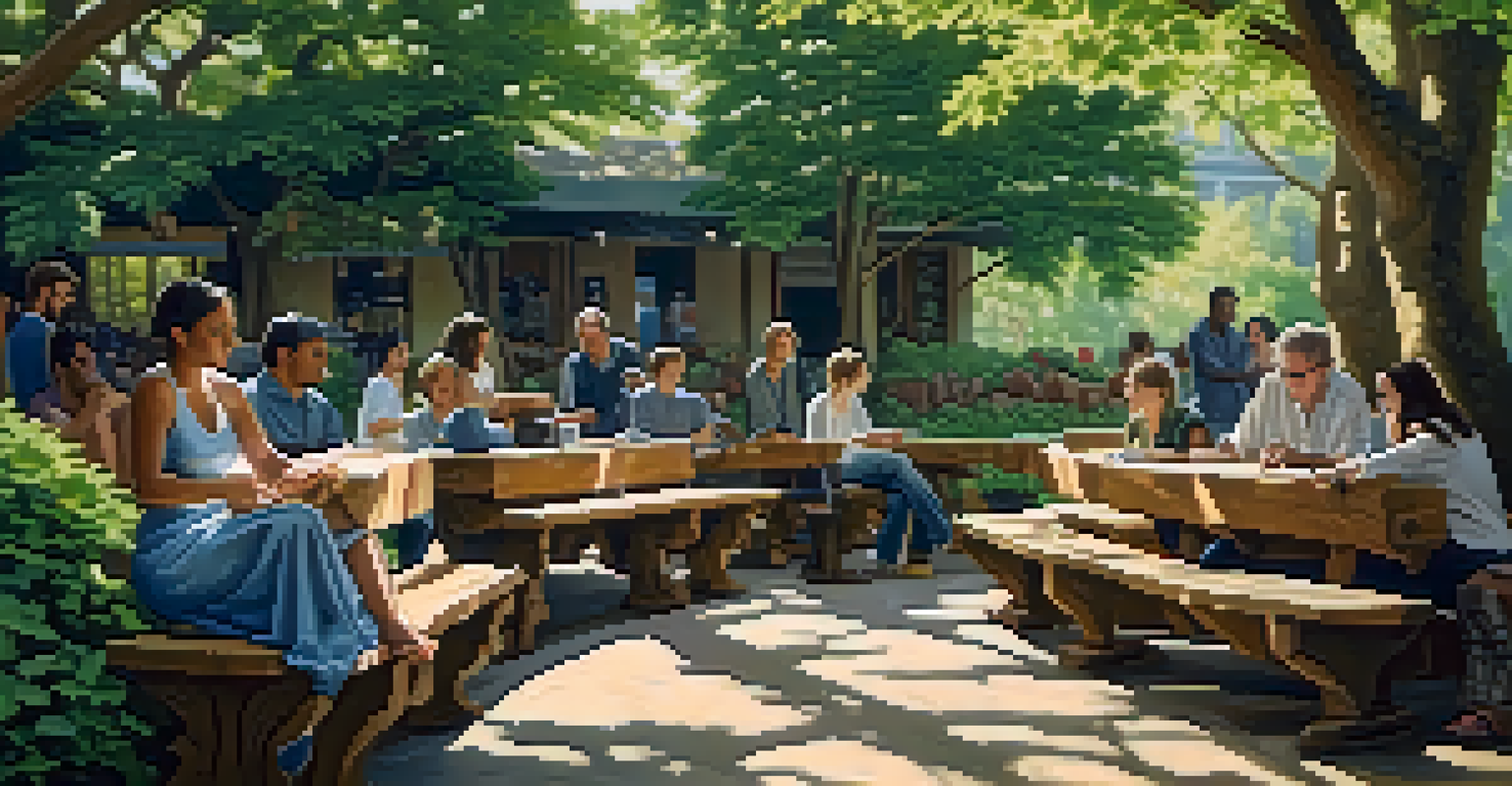Artistry and Healing: Carving as a Mindful Emotional Outlet

Understanding Carving as a Form of Artistry
Carving is a unique form of artistry that involves shaping materials like wood, stone, or even ice into beautiful creations. This hands-on process allows artists to express their emotions and thoughts in a tangible way. The act of carving can be meditative, drawing the creator into a flow state where worries fade away. In essence, carving becomes not just a hobby, but a profound form of self-expression.
Art is not freedom from discipline, but disciplined freedom.
Many artists find that the tactile nature of carving helps them connect with their inner selves. As they chip away at the material, they often uncover layers of emotion that they may not have been aware of. This connection can lead to moments of clarity and understanding about their feelings. Ultimately, carving transforms raw materials into personal reflections of their inner worlds.
Furthermore, the focus required for carving encourages mindfulness. Mindfulness, the practice of being present and fully engaged, allows artists to immerse themselves in the moment. This engagement not only enhances the quality of their work but also promotes emotional well-being.
The Therapeutic Benefits of Carving
Engaging in carving can offer significant therapeutic benefits, particularly for those navigating emotional challenges. As artists carve, they can channel their feelings, whether it's stress, sadness, or joy, into their work. This emotional release can lead to a sense of relief and accomplishment, making carving a form of therapy that doesn’t require words.

Additionally, the rhythmic movements involved in carving can have a calming effect on the mind. Similar to practices like knitting or painting, the repetitive actions can help reduce anxiety and promote relaxation. Many find that after a carving session, they feel lighter and more centered, as if the act itself has helped to process their emotions.
Carving as Self-Expression
Carving allows artists to connect with their emotions, transforming raw materials into reflections of their inner worlds.
Moreover, creating something beautiful can instill a sense of purpose and achievement. As individuals see their skills improve and their pieces take shape, their self-esteem can flourish. This boost in confidence can be particularly powerful for those who struggle with mental health issues.
Mindfulness and Presence in Carving
Carving inherently requires a level of focus that fosters mindfulness. When an artist is engrossed in the task, they often forget about the outside world and their daily stresses. This state of presence is essential for both artistic expression and emotional healing, as it allows for a deeper connection with oneself.
Every artist dips his brush in his own soul, and paints his own nature into his pictures.
As the artist concentrates on each cut and detail, they are encouraged to observe their thoughts and feelings without judgment. This non-judgmental awareness is a core principle of mindfulness, which can lead to greater self-acceptance and emotional resilience. Carving acts as a safe space for individuals to explore their inner landscapes.
The meditative nature of carving can also help cultivate patience and tolerance for discomfort. By learning to sit with their emotions during the creative process, artists can develop coping mechanisms that extend beyond their art. This practice can transform how they approach challenges in their daily lives.
Creating Community Through Carving
Carving can also foster a sense of community and connection among artists. Joining a carving group or taking classes can lead to friendships and support networks that enhance the healing experience. Sharing techniques, tips, and personal stories creates a bond that can be incredibly comforting.
In group settings, artists often find that discussing their work and experiences helps them process their emotions further. The shared understanding of the therapeutic nature of carving can create a welcoming environment where individuals feel safe to express themselves. This camaraderie can be a vital aspect of emotional healing.
Therapeutic Benefits of Carving
Engaging in carving can provide emotional release and a sense of purpose, acting as a form of therapy for mental health.
Moreover, community carving events can bring awareness to the mental health benefits of the craft. By showcasing their work and experiences, artists can inspire others to explore carving as a means of emotional expression. Together, they can create a ripple effect that encourages more individuals to engage with this mindful art form.
The Intersection of Art and Healing Practices
Carving sits at the intersection of artistry and healing, blending creativity with therapeutic practices. Many mental health professionals recognize the benefits of art in therapy, incorporating various forms of artistic expression, including carving, into treatment plans. This integration allows for a holistic approach to mental well-being.
Art therapy, which often includes carving, enables individuals to explore their emotions in a non-verbal way. This can be particularly beneficial for those who find it difficult to articulate their feelings. The physical act of creating something can often speak louder than words, providing insight into one's emotional state.
Furthermore, the combination of artistry and healing promotes self-discovery. As individuals carve, they may uncover hidden emotions or thoughts, leading to personal growth and understanding. This journey can illuminate paths to healing that traditional talk therapy might not reach.
Tools of the Trade: Getting Started with Carving
Getting started with carving doesn’t require a massive investment in tools or materials. Beginners can use simple items like a carving knife and a piece of wood to begin their journey. As they progress, they can explore various tools and materials that suit their personal style and preferences.
Many resources are available for those looking to dive into carving, from online tutorials to local workshops. These opportunities not only teach skills but also connect aspiring carvers with like-minded individuals. Finding a community can make the learning process more enjoyable and fulfilling.
Community and Connection
Participating in carving groups fosters friendships and support networks, enhancing the emotional healing experience.
It's essential to remember that carving is a skill that develops over time. Beginners should approach the craft with an open mind and a willingness to learn from mistakes. Each piece carved is a step toward mastery, and the process itself can be just as rewarding as the final product.
Embracing the Journey of Carving and Healing
Ultimately, carving is more than just a craft; it’s a journey of self-exploration and healing. As individuals delve into their creativity, they often find unexpected insights about themselves and their emotions. This journey can be transformative, leading to greater self-awareness and emotional well-being.
Embracing the process of carving allows artists to cultivate patience and resilience, as each piece reflects their unique experiences. Whether creating for personal enjoyment or to share with others, the act of carving fosters a deeper connection to oneself and the world.

As more people discover the healing power of carving, the art form continues to evolve and flourish. By sharing their stories and creations, artists contribute to a larger narrative about the importance of creativity in mental health and healing. Carving, in all its forms, invites us to explore our emotions and express them in beautiful and meaningful ways.